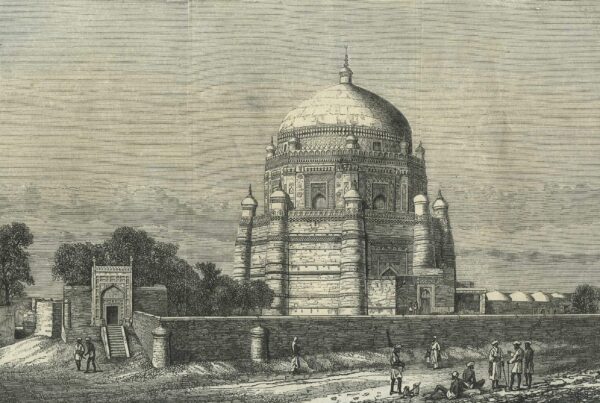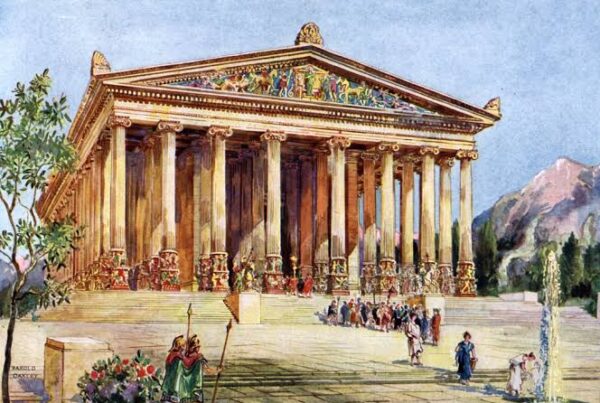By Uzair Waseem
The story of Alexander the Great’s conquest of South Asia is a captivating chapter in the annals of history. Spanning from 327 to 325 BCE, this extraordinary expedition marked the culmination of Alexander’s ambitious campaign to conquer vast territories and unite the known world under his rule. The encounter between Alexander’s Greek army and the diverse kingdoms of ancient South Asia was a collision of civilizations, leaving an indelible mark on both sides.
South Asia: A Tapestry of Cultures and Kingdoms
South Asia, with its rich cultural tapestry and diverse kingdoms, stood as a beacon of civilization and wealth. From the great Mauryan Empire to the Nanda Dynasty, the subcontinent boasted a rich history of its own. It was a land of intellectual pursuits, advanced trade networks, and sophisticated urban centers. The subcontinent’s kingdoms, ruled by various dynasties, exhibited a remarkable diversity of languages, religions, and cultural practices.
Alexander’s Ambition and Arrival:
In 327 BCE, Alexander crossed the formidable Hindu Kush mountains, venturing into the vast region of present-day Pakistan. His army, battle-hardened and fueled by a thirst for conquest, descended upon the mighty Indus River. Upon crossing into what is today Pakistan through the Hindu Kush mountains and fighting chieftains across Swat, Alexander encountered the Kingdom of Taxila, ruled by the renowned King Ambhi. Recognizing Alexander’s prowess, Ambhi willingly submitted to his authority, forming a strategic alliance.
The Battle of Hydaspes
Alexander’s most significant encounter in South Asia occurred in 326 BCE at the Battle of Hydaspes (Jhelum River), against the formidable King Porus of the Paurava Kingdom. Historians describe the battle as a clash of titans, with Porus commanding a vast army and a fleet of war elephants. Though vastly outnumbered, Alexander’s superior tactics and well-disciplined troops prevailed, resulting in a decisive victory. The valiant King Porus, despite his defeat, earned the respect and admiration of Alexander, who recognized his bravery and reinstated him as a loyal ally.
Mutual Cultural Exchange
During his campaign in South Asia, Alexander’s armies encountered a rich tapestry of South Asian cultures, including the Gandhara civilization. Greek and South Asian cultures mingled and influenced each other, leading to a remarkable synthesis of artistic styles which would go on to produce the Greco-Buddhist art of Gandhara. This cultural exchange left a lasting legacy, visible in the magnificent sculptures and architectural marvels of the Gandhara region. Greek artistic influences merged with local traditions, creating a unique blend that would endure for centuries to come.
Challenges and Retreat
As Alexander ventured deeper into South Asia, his troops faced numerous challenges. They battled against the harsh climate, navigated unfamiliar terrains, and encountered the fierce resistance of local rulers. Moreover, his soldiers grew homesick, longing for the familiar comforts of Greece. Aware of these challenges and with his empire stretched to its limits, Alexander reluctantly decided to turn back, leaving behind a network of Greek settlements and allies in the region.
Legacy and Impact
Alexander’s conquest of the Indus Valley had a profound impact on both sides. While his empire did not endure, the seeds of Hellenistic influence were sown. Greek ideas and cultural practices, including philosophy, art, and governance, merged with the existing South Asian traditions, fostering a cross-pollination of knowledge and ideas. The Mauryan Empire, under the reign of Chandragupta Maurya, further embraced Hellenistic influences, leading to a golden age of intellectual and cultural growth.
Conclusion
Alexander the Great’s conquest of the Indus Valley stands as a testament to the meeting of two great civilizations. It was a remarkable historical encounter that shaped the course of ancient history, leaving an enduring impact on the subcontinent’s cultural fabric. While Alexander’s empire eventually faded into the annals of time, his legacy, intertwined with the South Asia’s rich heritage, continues to captivate scholars and inspire awe. The conquest fostered a cultural exchange that influenced both Greek and South Asian societies, leaving behind a legacy of intellectual, artistic, and architectural achievements that continue to resonate to this day. Alexander’s campaign was, beyond gore and war, also a tale of cultural exchange, where two ancient civilizations met and left an indelible mark on each other’s history.
References:
Bosworth, A. B. (1988). Alexander and the East: The Tragedy of Triumph. Oxford, UK: Clarendon Press.
McCrindle, J. W. (1893). Ancient India as Described by Megasthenes and Arrian. Calcutta, India: Thacker, Spink & Co.
Raychaudhuri, H. (1996). Political History of Ancient India: From the Accession of Parikshit to the Extinction of the Gupta Dynasty. Delhi, India: Oxford University Press.
Romm, J. S. (2011). Ghost on the Throne: The Death of Alexander the Great and the War for Crown and Empire. New York, NY: Alfred A. Knopf.
Singh, U. (2015). A History of Ancient and Early Medieval India: From the Stone Age to the 12th Century. New Delhi, India: Pearson Education.
Wood, M. (2001). In the Footsteps of Alexander the Great: A Journey from Greece to India. Berkeley, CA: University of California Press.




